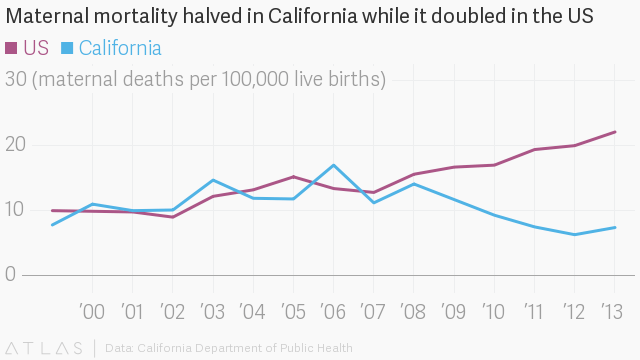Source: Maternal mortality data in the US are so bad it doesn’t know how many new mothers die. — Quartz
There is no comprehensive collection of data in the U.S. about women who died when they were pregnant or had recently given birth.
Part of the story of why is hidden in the numbers—and the ones about maternal deaths in the US are enough to give epidemiologists a serious headache. … It’s estimated that the spotty reporting that resulted missed up to half of all pregnancy-related deaths.
…
Unfortunately, the official CDC data are not updated to reflect the findings of the committees, which means the national numbers on record aren’t just likely to be inaccurate—they are known to be wrong. This is why there is such a discrepancy between the estimated ratio, 26.4 in 2015, and the numbers shared by the CDC (in the chart above). It is also one of the reasons why the US has failed to publish an official maternal mortality rate since 2007—“it’s inexcusable,” comments MacDorman.
Despite the discrepancies in the official rates—and whether or not there has been a steep increase in maternal mortality in the past few years, or instead the number was higher than believed in the past—one thing is for sure, says Main, “Either way we look at them, [the numbers] are high.”
Also: What’s killing America’s new mothers? — Quartz
While most of the world has drastically reduced maternal mortality in the past three decades, the US is one of just a handful of countries where the problem worsened, and significantly. … It’s an enormous problem to tackle for sure, but it is also one where the scope for improvement is as great as the gap between maternal mortality rates in the US and other countries of comparable wealth.
“The whole idea that in our backyard here is a problem [like this] when we have NGOs that do this work in Africa” was baffling, Rao told Quartz. “Of all the health issues affecting the US, [maternal mortality] is the most unacceptable,” he says.



